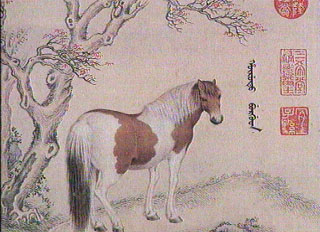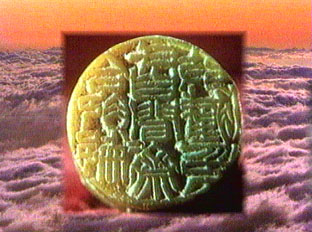 |
|
| Seals |
| CCTV.COM 2002-05-22 10:05:23 |
|
 Chinese seal carving is a unique art. Exquisite or forceful, a seal reveals the charm of an Eastern tradition and condenses in it the Chinese aesthetics that has lasted thousands of years. Chinese seal carving is a unique art. Exquisite or forceful, a seal reveals the charm of an Eastern tradition and condenses in it the Chinese aesthetics that has lasted thousands of years.
The red and white seal dates back to the beginning of Chinese history. At first the seal was stamped on clay sealing official documents as an authenticating sign. During the period of Spring and Autumn when the sovereign of a state delegated power to his ministers or generals, he needed an object as the token of authorization. In military affairs a tiger-shaped tally served for this purpose and in civil affairs, a seal. Early seals were cut in gold, silver, bronze, rhinoceros horn or tusk. Later the seal gradually departed politics. After the Tang Dynasty, it is also used in the autographs on paintings and calligraphic works and it has become an object of artistic appreciation in its own right.
The development of seal carving has close connection with calligraphy. The "seal script" is the main style found in seals. But the seal imprint seldom appears independently. It appears together with calligraphy, poetry and painting. They setoff each other. Poetry conveys one's feeling, painting represents images, calligraphy suggests a state of mind, and the seal imprint reveals one's personal character. They are internally linked and they are complementary to each other. In this way they manifest the spirit of Chinese art.
 During the Ming and Qing dynasties, as rock was used in seal cutting, albums of seal imprints became popular and theoretical studies on seal carving emerged, men of letters more and more conscientiously engaged in seal carving and their techniques became daily mature. China's seal carving entered its golden age. During the Ming and Qing dynasties, as rock was used in seal cutting, albums of seal imprints became popular and theoretical studies on seal carving emerged, men of letters more and more conscientiously engaged in seal carving and their techniques became daily mature. China's seal carving entered its golden age.
Many schools appeared during this period. The most notable were Anhui School, Zhejiang School, the School of Deng Shiru, School of Zhao Zhiqian, Jiangsu School, etc. Some were simple and elegant, some even and solemn, and others vigorous and impressive. The emergence of different schools marked the thriving of seal carving in China and brought the art to perfection.
Judging by its practical use, the seal imprint is a sign of the artist's or calligrapher's name or style. On one hand, it helps to mark the creator of a painting or calligraphic work so as to facilitate the collector. On the other, it helps to tell a genuine piece from a forged one, so that over the elapse of time the artists remain identifiable.
In the long-lasting Chinese culture, seals with other stationery produce an artistic atmosphere for the scholars' study. Seals, musical instruments, chess, calligraphic works and paintings together constitute the poetic environment of Chinese intellectuals' rooms.
The special appeal of the seal lies in its continuous free creation. In this condensed art we can perceive the evolving life of Chinese people's aesthetic values...
|
|
|
|
|
|
|
 |









